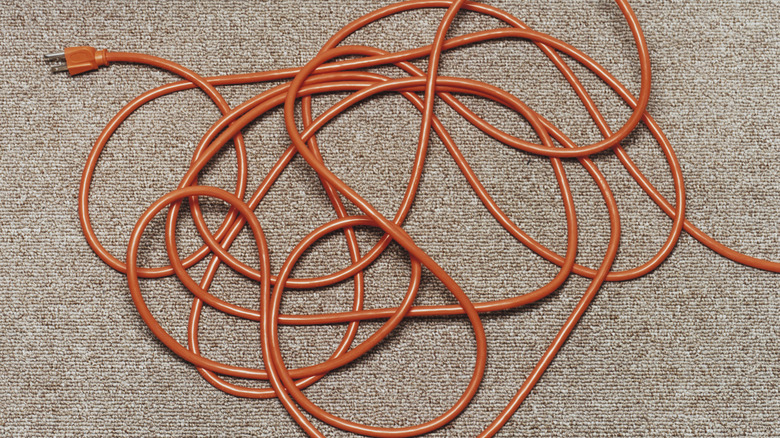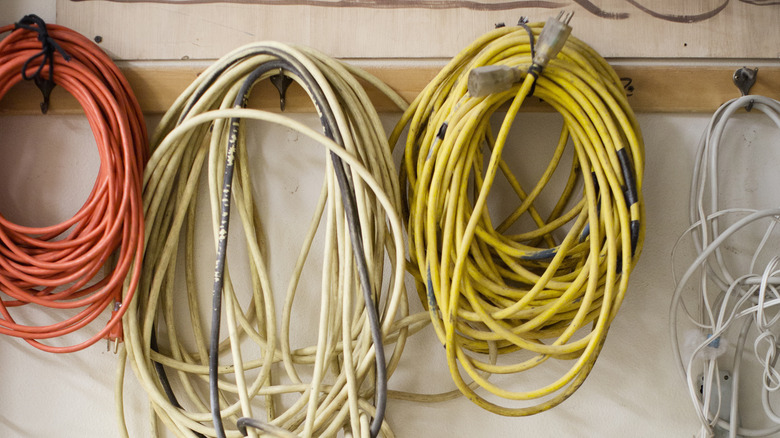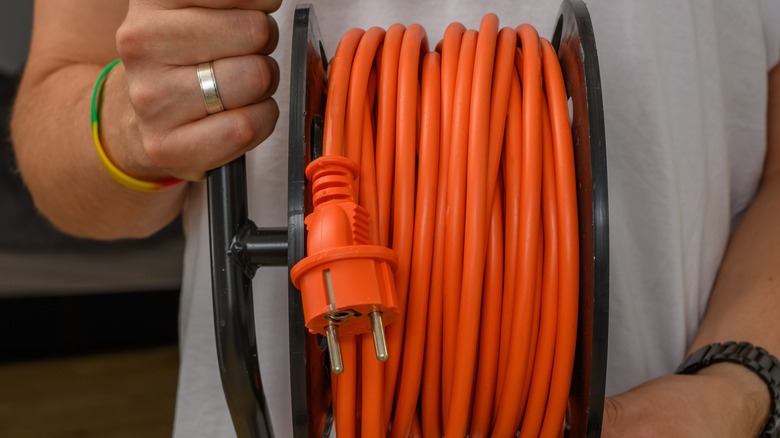The Extension Cord Hack You Saw Online Is Even More Dangerous Than You Think
We may receive a commission on purchases made from links.
When it comes to social media, it seems that a surefire way to gain interaction with your content is to post life hacks that either work surprisingly well or seem shockingly unwise. Unfortunately, an extension cord hack of the second variety recently appeared on Instagram, posted by an account called DailyOriginalVids. In the video, the creator demonstrates a method of waterproofing the plug and receptacle of what appears to be an outdoor-rated extension cord and a typical indoor-rated cord.
The hack includes cutting aligned grooves into two sides of a reusable food storage container, placing the plug and receptacle in the container, and closing the lid. The creator then pours a bucket on water in the container and gives a thumbs up sign to the camera, suggesting that electrical cords are now safe from water hazards. As the comments were quick to point out, this is wildly inaccurate. "This creates a risk of electrocution," one commenter warned before going on to share that he had reported the post for unsafe content. Let's break down the hack and dissect why it should never be used or suggested.
Dangers of DIY outdoor extension cord enclosures
As many of the commenters on the Instagram post have pointed out, a food storage container with holes created in the sides is no longer airtight and will not prevent water (including condensation) from reaching the plug and receptacle inside. A cord that is not rated for outdoor use — especially if that cord is only two-pronged and lacks a ground prong — should never be used outside or anywhere near water.
If an indoor-rated cord is exposed to water, it can cause an electrical short (aka a short circuit) to occur. When a short happens, excess electrical current begins to flow through the cord. The cord and/or plug can then become hot, melt, or even start a fire. If you touch a cord that is short-circuiting, you may be shocked or even electrocuted. Over time and repeated water exposure, the prongs of the cord can also become corroded, which can cause an electrical arc leading to similar results: excess current, heat, and potential melting or fire.
How to properly protect your outdoor extension cords
Any time you plan to use an extension cord outside, it is essential to use a cord that is specifically rated for outdoor use. These cords are significantly thicker than indoor-rated cords because they contain built-in insulated layers to prevent water or moisture from reaching the wires inside. Some of these cords also allow more current to safely flow through to allow for use with outdoor power tools. While some cords are rated for longer-term use, using one permanently is one of the biggest mistakes you're making with extension cords.
While outdoor-rated extension cords are safe to use in rainy or snowy conditions, they shouldn't be submerged in water. Keep them elevated to prevent puddles from flooding them. You can also purchase a connecter cover specifically designed to cover the plug and receptacle. A three-pack of connector covers with waterproof seals is currently available on Amazon for less than $15 and you can snag a heavy-duty 15-foot outdoor extension cord there for under $13. When it comes to managing electricity, always question the safety of online hacks and reach out to trusted sources before giving them a try for yourself. Looking for a way to store your new outdoor-rated extension cord? Try this brilliant pool noodle hack from TikTok.


